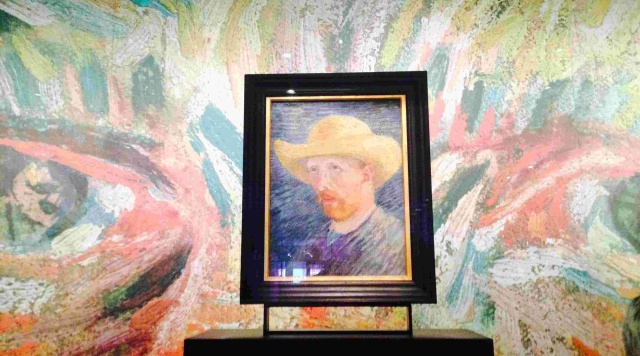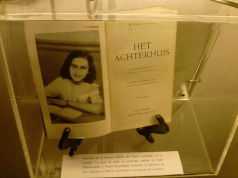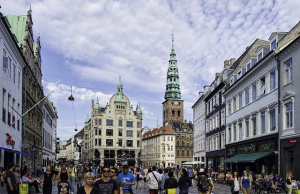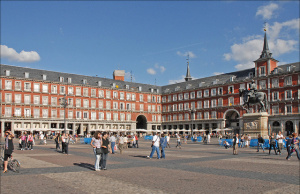Vincent Willem van Gogh is one of the most famous painters worldwide, producing works such as Starry Night, Sunflowers, Bedroom in Arles, Portrait of Dr. Gachet and Sorrow. Born and raised in Holland, he represents an integral part of the culture, whose work greatly influenced 20th century art. Today, you can visit the Van Gogh Museum in Amsterdam to get a better look at the fascinating artist.
Van Gogh’s early life
Van Gogh was born in 1853 to an upper middle class, devoutly religious family. His father was a preacher and from a young age he aspired to be a pastor. During his childhood years he would practice drawing, but never began to develop his painting talents until later in his twenties.
In 1879, Van Gogh went to work as a missionary in a mining region in Belgium, where he became interested in sketching the working class people of the local community. One of his most famous works, The Potato Eaters is a perfect example of the use of somber, dark palettes that Van Gogh used during his early years.
He also worked for some time for a firm of art dealers, and became acquainted with the lifestyle. His brother, Theo, who turned out to be his closest confidant throughout his life, had also moved to Paris and was working as successful art dealer.
![The Potato Eaters by Vincent van Gogh [Public domain], via Wikimedia Commons.](https://travelingeurope.biz//wp-content/uploads/2015/09/The-Potato-Eaters-Van-Gogh-compressed.jpg)
Until Van Gogh found his real calling as an artist in his late twenties, he lacked the motivation to complete his studies and moved from place to place, just working enough to get by, sketching occasionally. Once he began to focus on art, however, Van Gogh was determined to perfect his craft, studying with various teachers and practicing daily.
In 1886, Van Gogh moved to Paris to live with his brother and became inspired by the French Impressionists. He would later move to the south of France, becoming greatly influenced by the strong sunlight and painting brighter, more vibrant works in color. This inspired one of his greatest works, Sunflowers.
![Sunflowers by Vincent van Gogh [Public domain], via Wikimedia Commons.](https://travelingeurope.biz//wp-content/uploads/2015/09/Sunflowers-Van-Gogh-compressed.jpg)
Although Van Gogh was a highly productive painter, he suffered many years of anxiety and episodes of mental illness. In 1889, he checked himself into a mental hospital in Saint-Rémy-de-Provence, where he spent time recovering and continued painting on good days.
This process continued for some time, and finally in 1890 Van Gogh left the hospital and moved north to a small artist community in Auvers-sur-Oise, close enough to Paris so he could still visit his brother. There, Van Gogh befriended the doctor Paul Gachet, who kept an eye on him and encouraged him to put all his energy into painting, which he did, producing nearly approximately one painting per day.
Even though Van Gogh appeared to be improving in the peaceful atmosphere, he couldn’t overcome entirely his mental illnesses and stressors regarding the future. On July 27, 1890 Van Gogh shot himself with a pistol and died two days later.
The Van Gogh Museum
His legacy is clearly evident at the Van Gogh Museum, which displays some of his 850 paintings and 1,300 works on paper that he completed in a very short period of time.
The museum is also gives a great structure to learning about van Gogh. The ground floor exhibits “eye to eye with Van Gogh”, which emphasized his need to constantly improve his skills, especially through painting self-portraits. The first floor focuses on his early life between 1883 and 1889, where he found his vocation. The exhibit begins with his early, darker paintings, illustrates his inspiration through Japanese art and then shows his work from the south of France, considered the peak of his ability.
The second floor of the museum gives a close up to the personal life of Van Gogh, shown through the many letters he wrote to artist friends such as Émile Bernard and Paul Gauguin, and family, especially his brother Theo. Finally, the third floor displays the last year of his life, and his work produced during periods of mental illness. This floor also shows how his life and work have inspired artists even up until today.
A visit to the Van Gogh Museum is a must for anyone visiting Amsterdam. To avoid waiting lines as much as possible, reserve your ticket in advance with a selected time spot. You may still have to wait a few minutes, but it is nothing compared to if you just show up at the door.
Source: The Van Gogh Museum













It’s a buityful place like your post one love
Comments are closed.